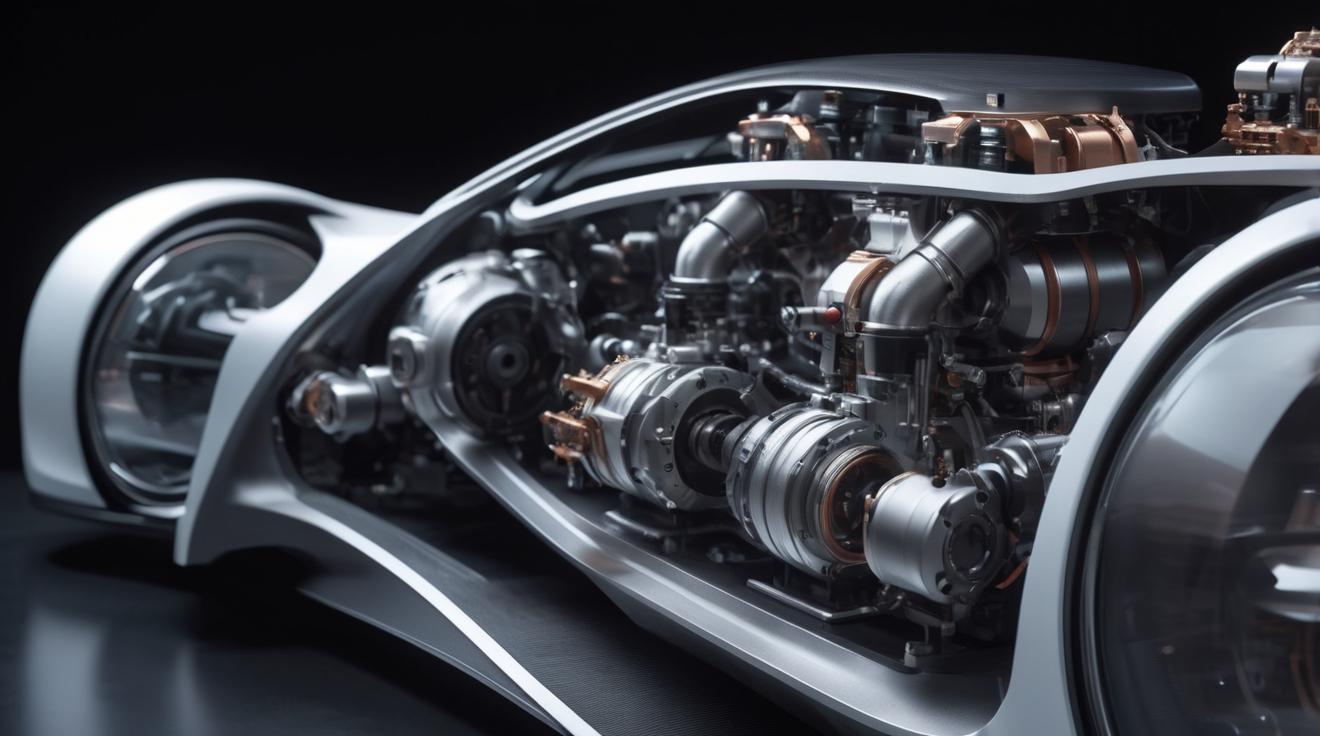# EV Powertrain Design Complexity Needs Digital Twin Technology
By leveraging digital twin technology, automakers can enhance the precision, efficiency, and speed of EV powertrain development, leading to superior-performing, more dependable, and cost-effective electric vehicles. The complexity of electric vehicle (EV) powertrains necessitates a multidisciplinary approach and advanced engineering to create efficient, reliable, and high-performing electric vehicles. Increasingly, automakers are turning to digital twin technology to tackle these design challenges and expedite the development of new EVs.
The urgency is evident, as the market for electric powertrains is poised for rapid growth. Industry data indicate the global electric powertrain market size was valued at $83.30 billion in 2022 and is projected to grow at a CAGR of 15.3% through 2030.
Key Challenges in EV Powertrain Design
Battery Technology Issues
Energy density is a significant concern. Designers require batteries with higher energy density to extend driving ranges without significantly increasing battery pack weight and size. Quick-charging capabilities and robust thermal management systems are also vital.
Electric Motor Design Issues
EV automakers must create high-efficiency motors that deliver substantial power output relative to size and weight. Effective thermal management is also crucial to prevent overheating and performance degradation.
Power Electronics Issues
Developing highly efficient inverters and converters is essential to manage power flow between the battery, motor, and additional systems. An advanced thermal management system is crucial to dissipate heat effectively, maintaining efficiency and preventing overheating.
Integration and Packaging Issues
Combining the battery, motor, and power electronics in a manner that optimizes space and weight distribution is essential. Modular components adaptable for various vehicle models are also crucial to meet diverse customer needs.
Thermal Management Issues
Maintaining optimal temperatures for batteries, motors, and power electronics is vital for performance and longevity under varying operational conditions.
Cost and Manufacturing Issues
Effective cost management for raw materials, scalable manufacturing processes, and a reliable supply chain are essential to control expenses and ensure smooth production operations.
How Digital Twin Technology Helps
Addressing these challenges requires a holistic approach involving materials science, electrical engineering, and software development. Automakers are increasingly utilizing digital twins to streamline EV powertrain design.
Simulation and Modeling
Design Validation: Digital twins enable detailed simulations of powertrain components, allowing for thorough testing and validation before physical prototypes are built.
Performance Prediction: Simulating various operating conditions helps predict powertrain performance, aiding in efficiency and reliability optimization.
Optimization of Components
Battery Management: Simulating thermal and electrical behavior assists in optimizing battery design for energy density and lifecycle performance.
Motor Efficiency: Refining motor designs through simulation leads to higher efficiency and better power density.
Real-Time Data Integration
Feedback Loops: Real-time data updates virtual models, improving simulation and prediction accuracy.
Predictive Maintenance: Continuous monitoring helps predict and address issues proactively, reducing downtime.
Virtual Testing and Prototyping
Cost Reduction: Virtual testing minimizes the need for multiple physical prototypes, cutting development costs and time.
Safety Testing: Simulations ensure safety standards are met without the risks of physical testing.
Integration and System-Level Analysis
System Dynamics: Analyzing interactions between components optimizes overall system performance.
Energy Management: Simulating the entire powertrain system enhances energy management strategies.
Manufacturing and Quality Control
Process Optimization: Digital twins optimize manufacturing processes, ensuring efficiency and quality.
Defect Detection: Early identification of potential defects allows for timely corrections.
Customization and Personalization
Tailored Solutions: Digital twins enable customized powertrain solutions for diverse models and markets.
Customer Feedback: Real-world performance data improves and tailors powertrain designs.
Collaboration and Communication
Interdisciplinary Collaboration: Digital twins facilitate collaboration among engineers and stakeholders.
Stakeholder Communication: Visual simulations convey design choices effectively to non-technical stakeholders.
Lifecycle Management
End-of-Life Analysis: Simulating components' lifecycle aids in recycling strategies, reducing environmental impact.
Continuous Improvement: Data-driven updates guide ongoing improvements and next-generation designs.
By adopting digital twin technology, automakers can achieve greater precision, efficiency, and speed in EV powertrain development, fostering the creation of better-performing, more reliable, and more cost-effective electric vehicles.













